iPad Pro 2021 review: Is it worth the upgrade?


If you place all three generations of iPads side by side and take a look at their respective screens from a top-down view, you'll probably rub your eyes in disbelief. All of them bear an uncanny resemblance to one another. However, the changes are not always external, as this year's edition of the iPad has seen a hardware upgrade underneath the hood that offers improved performance by leaps and bounds. In a way, it has skewed the direction of this review by making it into an amalgamation of a comparison between the old and the new, purchasing advice, and of course, the actual review itself. This begs the question: What makes the iPad Pro 2021 even better and is it worth your while?
Good
- Great performance due to the M1 processor
- Thunderbolt port
- 5G network support
- Great audio performance
- Very good battery life, especially when on standby
- Center Stage is great
- 1st generation Magic Keyboard compatibility
Bad
- iPadOS needs an urgent update to make mobile productivity a possibility
- The smaller 11-inch model doesn't have an XDR display
- Front camera location is not optimal
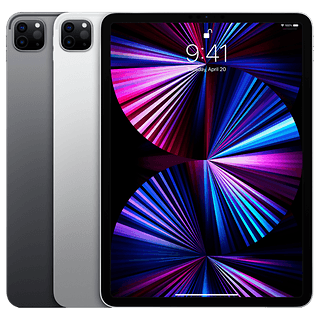
Apple iPad Pro 11" (2021) release date and price
The iPad Pro 2021 11-inch model starts with an asking price of $799, sporting 128 GB of storage space and Wi-Fi connectivity. If you would want to enjoy the SIM-enabled model, then the iPad Pro would see its price bumped up to $999.
As for the 12.9-inch model, it has a starting price of $1,099 with 128 GB of internal memory and Wi-Fi connectivity. For those who want the 5G-enabled model, it will start from $1,299 - depending on the amount of internal memory that you would like to have.
Both iPad Pro models max out at 2 TB of internal storage space, just in case you're wondering. Now that's a lot of portable memory no matter which way you look at it!
iPad Pro's design remains the same: which is unfortunate in some ways
In the early days of the smartphone era, each new generation smartphone also introduced a new design language, but there has been a significant shift from this school of thought in recent years. Since its 2018 model was launched, the iPad Pro hasn't changed (much) in terms of design. This year, the 12.9-inch and 11-inch models are still part of the product line-up.
The rounded edges continue to feature here, while the power button and volume controls are at the same place on the top right section. Holding it in your hands feel very comfortable, to say the least.
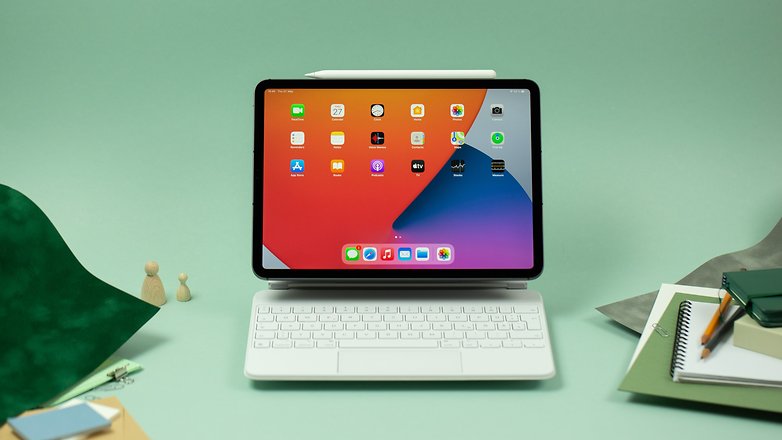
Unfortunately, at this point in time, I'm also staring right into the front-facing camera, which Apple has again integrated into the front segment of its tablet. During video calls and Face ID, it has happened way too often where my fingers cover the camera, blocking the camera's field of vision.
That proved to be a major annoyance for me. I suspect that the same degree of annoyance might be experienced by the number of iPad Pro users out there who also hold the device along its edges, where the camera's position is less than optimal.
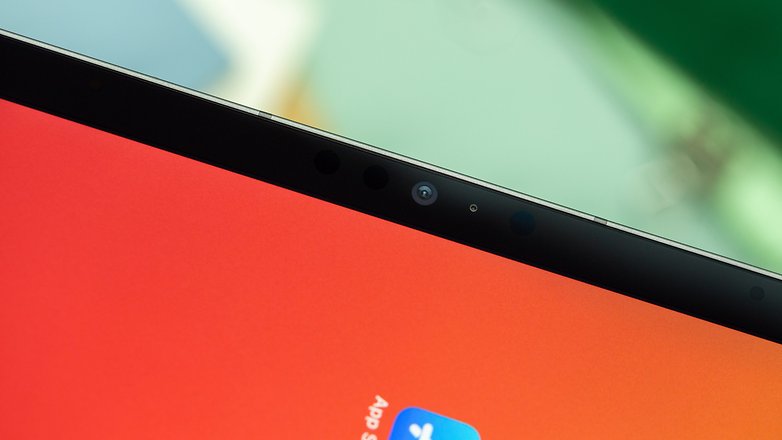
The camera itself is new and boasts a wide-angle view of 122 degrees. The front camera is also responsible for a new feature known as "Center Stage" that I personally adore. More on that below, though.
11-inch display: Same old, same old here
Unlike the 12.9-inch model, the 11-inch model's display has remained the same. Apple decided to settle for a LCD display at 2,388 x 1,668 pixels resolution. This iPad's display uses a variable refresh rate that changes based on the content being viewed, ranging from 24Hz to 120Hz. Theoretically, this method allows you to view content in a smooth manner while maximizing battery life.
In fact, working on the old as well as new iPad continues to be a real pleasure, and the display plays a huge role in this. Colors are displayed in an accurate manner even without the XDR display and the so-called True Tone technology, where Apple's tablet will adjust the white balance based on the ambient light. This results in a better reading and working experience.
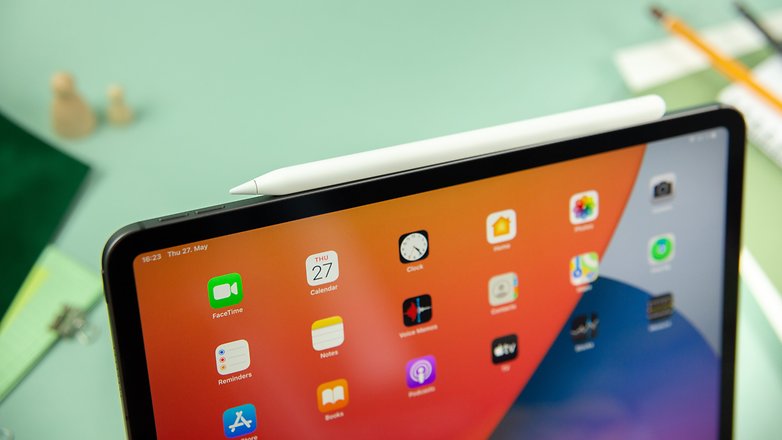
Anyone who has ever worked on an iPad knows what I'm talking about.
It's a shame that the smaller iPad missed out on the XDR display. I deliberately went for the 11-inch model, as the smaller form factor is better suited for my usage pattern. However, if you happen to work a lot with video or images, you should definitely check out the larger iPad Pro model. The color reproduction on that model is supposed to be superior on the XDR display.
Apple iPad Pro 11" (2021) software
The iPad Pro 2021 currently ships with iPadOS 14.6 right out of the box.
It's been more than 10 years now since Steve Jobs introduced the first iPad. I can still remember thinking it was simply an oversized iPhone at that time. The software that ran on the first iPad was effectively iOS, which has been scaled up to cater for a larger display.
The processor often labored when you tried to use some of its productivity applications, and the only thing you couldn't do with the iPad back then was to make phone calls. Apart from that, it did feel like an oversized iPhone which could not do very much otherwise.
Fast-forward to today, and we have a separate iPad operating system that was birthed out iOS, and known as iPadOS. iPadOS continues to be improved upon to be a true operating system for a tablet. This process began at WWDC19 with the announcement of its own OS, and it continues to be a work in progress.
To me, the iPhone's operating system looks far more advanced in many areas. After all, the smartphone allows you to place widgets anywhere on the home screen and providing you with a plethora of options when it comes to setting up the device according to your preference.
Widgets do exist on the iPad, though. However, they can only be found in the "Today" view. The new performance gains that accompany the M1 chip therefore feel like overkill.
Apple iPad Pro 11" (2021) performance
If you had to describe the 2021 iPad Pro, it would definitely be a "performance monster". Apple has made sure that across all areas, its tablets are able to top-notch performance no matter what.
Computing power performance in the M1 chip
Much has been written about the M1 chip and how well it performs here, as well as elsewhere. The first system-on-a-chip from Apple has 8 CPU cores, 8 cores for the GPU, and 16 Apple Neural Engine cores. Apple claims the M1 delivers a 50% performance boost and 40% better graphics performance.
Placing the 2020 iPad Pro and this year's iPad Pro side-by-side in a Geekbench benchmark test, you can definitely see Apple's touted performance claims.
Geekbench 5 benchmark results comparison
| Device | Single-core | Multi-Core |
|---|---|---|
| 2021 iPad Pro (M1) | 1721 | 7192 |
| 2020 iPad Pro (A12Z Bionic) | 1581 | 4644 |
Apps ran incredibly smooth when swiping and switching between applications. There were no slowdowns or any instances of apps crashing. Of course, this was also due to the 8 GB RAM, which is 2 GB more compared to its 2020 predecessor. By the way, the iPad Pro boasts of at least 1 TB of internal storage and 16 GB of RAM!
Yes, there is also a Thunderbolt port!
The USB-C port on the iPad Pro has now been around since late 2018, but what's new here is that it can also be used as a Thunderbolt port. Anyone who has ever tried to transfer large amounts of data from or to the iPad with an external hard drive knows what this means. Data can be transferred at speeds of up to 10 Gbps in this manner.
You can also use the very same port to connect other Thunderbolt devices or even displays with resolutions of up to 6K.
5G support is a real plus and Wi-Fi 6 makes it future-proof
The 5G-compatible model is quite a bit more expensive compared to the Wi-Fi only model. Nevertheless, I personally wouldn't be able to do without it. It's the independence from the nearest Wi-Fi hotspot that makes the iPad Pro so indispensable for me.
Finally, the iPad Pro has now also got the 5G option. At least here in Berlin, 5G is available virtually everywhere in the city. The plus in speed is clearly noticeable.
The iPad Pro can also radio with Wi-Fi 6. This should only bring something in the fewest cases, since this also requires a Wi-Fi 6 router. However, the new standard should now gradually arrive - and the iPad Pro is at least prepared for it.
Similar to before, the iPad Pro's audio performance is sensational
The iPad Pro 2021 once again comes with a quartet of speakers that offers really excellent audio performance. It is really amazing just how such a slim-looking device is able to pack such powerful audio performance. Compared to last year's iPad, however, not much has changed here. Why should it? After all, if it ain't broke...
Apple iPad Pro 11" (2021) camera
The main camera of the iPad Pro consists of a 12 MP wide-angle camera, a 10 MP ultra wide-angle camera, and a True Tone Flash. The iPad can record videos in 4K. When compared to last year's iPad Pro, almost everything remains the same at this point.
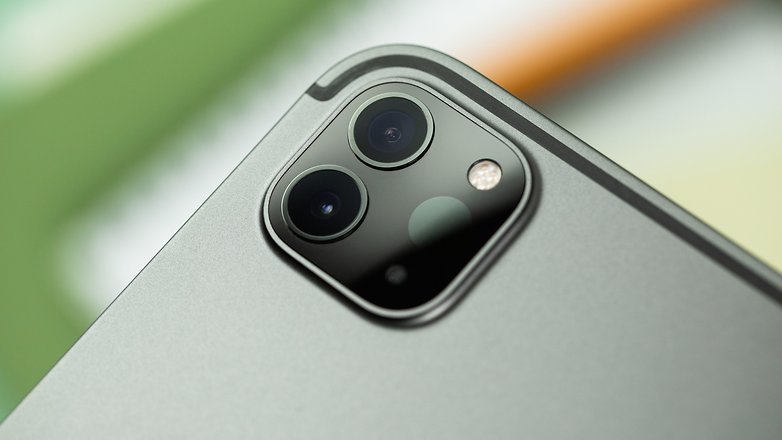
But something has changed in front. Here, there is an all-new ultra wide-angle camera that can capture images at 122 degrees at 12 MP resolution. Apart from great-looking selfies and improved unlocking performance via Face ID, the new camera can also do one thing above all else: Center Stage!
Center Stage: More than just a nice gimmick
Using machine learning, the front camera can track and center its focus on me during video conferences. This is especially helpful when you're in the middle of a presentation, moving around in front of a whiteboard, for example. If more people come into the picture, the camera zooms out and tries to capture everyone.
Center Stage works amazingly well and reliably. And it is a lot more practical than you might think at first glance. It's difficult to describe, but it is safe to equate it to having a cameraman stand behind the iPad, ensuring that you always remain in the frame.
If you don't like it, you can turn Center Stage off (Menu > FaceTime > Keep in Picture).
Compared to last year's iPad, Center Stage is the biggest difference for me in terms of its camera capabilities, and it is something that I really appreciate.
Apple iPad Pro 11" (2021) battery
The battery in the new iPad Pro models has become slightly larger. Thus, both models are also a bit thicker and heavier. This is only barely noticeable and does not affect anything else on all accounts. Owners of the old Magic Keyboard can still use it for the 2021 model.
The larger battery capacity is due to the increased performance capability of its M1 processor. Apple probably wanted to make sure the new iPads didn't fall behind the older models in terms of battery life.
Throughout the duration of my one-week review of the new 11-inch iPad Pro, the battery life impressed me. I charged it once a day with my regular usage pattern (connected on both 5G and WLAN, checking emails, browsing through sites, using a word processing program) that consists of approximately 8 to 9 hours.
The new iPad Pro is significantly better in battery consumption when in standby mode. However, the battery of the new iPad Pro begins experience visible drains when performing computationally intensive tasks, which is to be expected.
Thus, users who work with 3D modeling or like to play graphics-intensive games should also have their charger within reach at all times.
Apple iPad Pro 11" (2021) technical specifications
iPad Pro 2021 hardware specifications
| Feature | Apple iPad Pro 2021 11" | Apple iPad Pro 2021 12.9" |
| Display Size: |
11-inches |
12.9-inches |
| Resolution: |
2338 x 1668 pixels (261 ppi) |
2732 x 2048 pixels (265 ppi) |
| Display Technology: |
LCD |
LCD |
| Chipset: |
Apple M1 Chip |
Apple M1 Chip |
| Number of cores: |
8 (CPU/GPU), 16 (Neural Engine) |
8 (CPU/GPU), 16 (Neural Engine) |
| RAM: |
8 GB |
8 GB 16 GB (1TB model and above) |
| Rear camera: |
12 megapixels (wide-angle), 10 megapixels (ultra-wide-angle), LiDAR sensor |
12 megapixels (wide-angle), 10 megapixels (ultra-wide-angle), LiDAR sensor |
| Flash: |
LED |
LED |
| Front camera: |
12 megapixels (ultra-wide angle) |
12 megapixels (ultra-wide angle) |
| Internal storage: |
128 GB or more |
128 GB or more |
| Removable storage: |
Not available |
Not available |
| Battery life: |
Up to 10 hours (WLAN), up to 9 hours (4G/5G) |
Up to 10 hours (WLAN) up to 9 hours (4G/5G) |
| Dimensions: |
24.76 x 17.85 x 5.9 mm |
28.06 x 21.49 x 6.4 mm |
| Weight: |
471 g |
682 g |
Final verdict
For me, the iPad Pro remains the best tablet in the market. Apple has pulled further ahead of the competition with its 2021 model, especially in terms of performance. With the M1 chip, the iPad has effectively become a real Mac, but without the operating system to match.
I can already guess what some might say: Why not just install macOS on the iPad Pro? After all, you wouldn't need another computer then. Unfortunately, it's not that simple. The iPad Pro is a device in a class of its own, and at least from my perspective, is superior to a regular laptop in a number of ways.
There is, for example, the portability and the fact that I am "always on" with the iPad. You have Face ID on the iPad and the Apple Pencil, which reliably helps me to be more productive with many things.
On the other hand, when using an iPad, one is often far more limited in terms of multitasking and file management. Unfortunately, there is no such thing as a perfect solution. However, if you don't have to constantly jump back and forth between many windows when working, you can already buy a full-fledged computer to use with the iPad Pro.
Who is the iPad Pro 2021 meant for?
For those who have been thinking about getting a tablet for a while and haven't picked one up yet, the new iPad Pro comes across as highly recommended. This is especially true for those who already use Apple devices and are deeply entrenched in its software ecosystem. Since 2020, the iPad Pro can function as a second display via Side Car.
Is it worth switching from the iPad Pro 2019/2020 to the iPad Pro 2021?
True Apple fans have probably answered this question for themselves already and do not need to read the objective conclusion below.
But if you were to look at things objectively, you're not getting that much bang for your buck at this point unless you're in dire need of a performance leap. The new front-facing camera and Center Stage especially come across as very handy for video conferencing, while 5G support brings a noticeable boost in browsing speeds outside of Wi-Fi networks.
If those two factors are enough to justify the relatively high investment, you'll be very happy with the new iPad Pro!



















Too big for a tablet. Too small for a laptop.